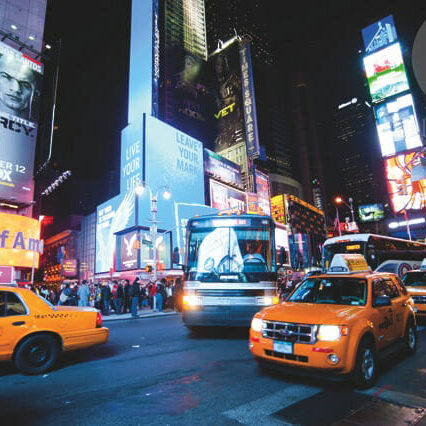
It may sound surprising, but the majority of residents in compact urban centres use less fossil fuel, walk more, bike regularly, and use public transit more frequently than their counterparts in the country.
For most city dwellers, their way of life has not been a conscious decision, but rather is the result of extenuating factors that promote sustainable behavior. People living in cities use various energy efficient methods of transportation, which require less fossil fuel and emit smaller amounts of greenhouse gases.
At first glance, the borough of Manhattan in New York City may seem unsustainable; it uses a tremendous amount of water and electricity, emits an enormous amount of greenhouse gases and uses a considerable amount of fossil fuel. However, relative to its size, Manhattan uses a smaller amount of electricity and fossil fuel per capita than any other U.S. city.
According to David Owen, author of Green Metropolis, New Yorkers (and inhabitants of other dense metropolises such as Amsterdam and Copenhagen) trade the supposed convenience of the automobile for the true convenience of proximity.
In dense urban cities, necessities such as grocery stores and doctors’ offices are found in apartment building lobbies, down the street, or around the corner from most home residences. But, these amenities in the suburbs and non-compact cities tend to be located further from residential areas.
According to Owen, the “eighty-two percent of employed Manhattan residents that travel to work by public transit, by bicycle, or on foot” do so because they are surrounded by factors that promote sustainable transportation.
Many city dwellers picture themselves living in the country, taking hikes while walking the dogs, and enjoying a sustainable life style. That, however, is a fallacy; living in a rural environment requires one to travel further distances and therefore employ unsustainable methods of transportation.
According to Owen, the average New Yorker annually generates 7.1 metric tonnes of greenhouse gases, a lower rate than that of residents of any other American city, and less than 30 per cent of the national average.
Clearly, living closer together promotes cleaner and more efficient modes of transportation, decreases the necessity for commuters to use ecologically damaging transportation, and alternately enables individuals to utilize different efficient modes of environmentally friendly transportation.
Manhattan is so compact it accounts for just one per cent of the United States green house gas emissions while housing 2.7 % of its population. If the same ratio between percentage of population and percentage of green house gas emissions existed for the rest of the United States, American emissions would fall below the standard of the 1997 Kyoto Protocol.
A compact metropolis increases the incentive for residents of dense urban areas to use sustainable methods of transportation and live an all around sustainable lifestyle. Most dense urban cities are not the result of deliberate sustainable planning, but rather a combination of social, economic, political, and geographical factors that promote sustainable development.
The physical structure of urban metropolises makes the shift towards methods of sustainable transportation easier for larger populations to undertake. But without policies to keep cities compact and population densities high, they will begin to disintegrate all over the world.
Not only is it pertinent that we change our patterns of production and consumption, it is equally important to alter the environments in which we live. Our contemporary globalized world is faced with many obstacles to overcome, all which increase the need for climate change.
The future is going to compel us to live differently. Moving to the city, urban centers and metropolises are essential to achieving global sustainability.







